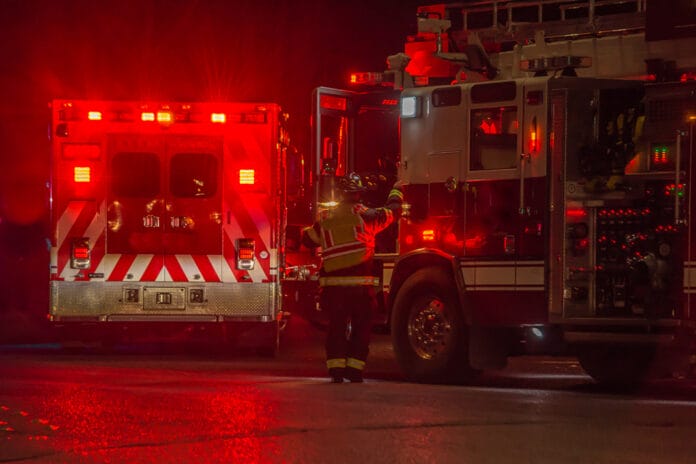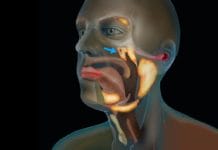Warning: This article contains explicit descriptions of a traumatic event that may be a trigger for some individuals.
When the brave people who serve as first responders step off the streets and into our dental chairs, we may see them as every other patient seeking routine care. This may seem simple, but it can hold more profound implications for the patient. As they leave their shift and settle into off-duty life, they may carry stress and trauma in their minds from the previous day or night’s events. As civilians, we often take for granted the horrors our first responders witness in the line of duty.
The mental health status of first responders is often overlooked. As the partner of a veteran firefighter and an educator on trauma, people often comment to me, “I didn’t realize that firefighters have PTSD. They seem so easy-going and happy on duty.” This misconception is born from the emotional labor firefighters must engage in to maintain a public image and the unspoken pressures to be tough or unbreakable. The truth is that most are carrying around silent atrocities that live below the surface of their conscious minds. These memories rear their ugly head at inopportune times, affecting daily life and relationships.
The American Psychiatric Association defines post-traumatic stress as “a psychiatric disorder that may occur in people who have experienced or witnessed a traumatic event, series of events or circumstances. An individual may experience this emotionally or physically harmful or life-threatening and may affect mental, physical, social, and spiritual well-being.”1
First responders witness and then engage in traumatic events weekly or daily. They are seen as heroes who rush in to put out a fire or show up on a scene to ensure public safety, but what they see day in and day out is far beyond what most of us could tolerate or comprehend. As people of integrity under oath, they persevere as they serve us from shift to shift.
Traumas endured by first responders include witnessing fatal car and motorcycle accidents, performing CPR while their loved one stand by in fear, the destruction of fire, and the toll of drugs and mental health issues on the people they serve, violence, and sometimes losing one of their own during a call. This is the shortlist, as a variety of other traumas are realities.
Imagine this scenario: You are sound asleep at 3 a.m. You are jolted awake by bells and lights in the tiny dorm-like room you call home every third night. You go from a state of deep sleep to a state of emergency within seconds. You throw off the blankets, grab your phone, and rush towards the bay where you will quickly dress in 80+ pounds of gear, buckle into a giant piece of equipment, and, within less than three minutes, hit the road with sirens piercing your ears and lights that have your sympathetic nervous system standing at attention.
The dispatcher on the radio lets your crew know that you are going to a major vehicle accident, but you have no idea what you are about to embark on. You review what you have been trained to do – extrication, CPR. Your brain tells your body you are in danger because this is the body’s natural response mechanism to such events. Your sympathetic nervous system is in full force, and stress hormones pulse through your veins, touching every cell and every organ. Your heart rate and blood pressure are elevated, and you do not even notice that your breath is shallow and rapid under the weight of the gear.
When you arrive on the scene, you see a mom standing outside the car, waving you in, crying in desperation as her child is trapped in the vehicle. You have done this so many times, and you go on autopilot, relying on training and muscle memory, and tuck away any emotion that may be rising in your core. There is no time or room for emotion.
You gave it all you had, but the rescue does not have a happy ending. You and your crew go back to the station, exhausted and defeated. It is now 6:00 a.m., and you have one hour until the next crew comes in for relief, and you head out into the world. You have one hour to process the loss, the sights and sounds, the mother’s voice and pleas for help. What’s next? You do what you always do. You tape it up and head home to your awaiting family that wants to know how your night was. You cannot tell them because it is too heavy and they will not understand. Instead, you bury the emotions deep inside, put a smile on your face, kiss your spouse good morning, and load your kids in the car for school.
Perhaps you leave the station and go to the dental office for a hygiene appointment you scheduled six months ago. You walk into the operatory to a hygienist who greets you with a smile. You think, “Oh good, the hygienist seems nice. I can rest in the dental chair for a bit.”
As you try to settle into the appointment and forget the trauma of the last few hours, the hygienist asks you the most dreaded question asked of first responders. “What is the worst thing you have ever seen as a firefighter?” They are just trying to make light conversation and get to know you, but for you, this question floods your mind and body with sensations and images of the previous evening’s nightmare. Now you sit in the dental chair, back in that fight or flight state, numb, ears ringing, not hearing anything else the hygienist says.
Firefighter, paramedic, and investigator Dustin Bortzfield is no stranger to daily life as a first responder. With over 20 years of service, Bortzfield has seen his share of traumatic incidences. Not until recently has he begun to put the puzzle pieces together about how these events affect his daily life, functioning, and relationships. Coming off of a 24 or 48-hour shift and back into civilian life can take up to a day to readjust, depending upon the events of the previous hours. Even then, I use the word “adjust” lightly as this repetitive dance on and off duty becomes the new normal, and the first responder begins to operate from a place of chronic adrenal fatigue and hypervigilance.
Bortzfield describes being fine in one moment and swept into a whirlwind in his mind the next. For many, this can surface as rage, withdrawal, depression, anxiety, and feelings of general irritability. Some even turn to alcohol to cope. Bortzfield said he can recount over 40 severely traumatic calls over the last 20 years. These are just the ones he can remember.
One of the symptoms described by Bortzfield may seem benign to someone who does not suffer from repeated exposure to PTSD, but to him, it affects daily well-being. He says, “I can be having a nice dinner with my family, and a kid across the restaurant starts making a clicking sound with a toy. The sound becomes so loud in my head. It is the only thing I can hear. It suddenly becomes overwhelming, and I need to get out of the restaurant immediately.”2
This type of response is due to the central nervous system being constantly on alert. A traumatic event activates the sympathetic nervous system, sending the person into the fight, flight, or freeze state and releasing stress hormones. In someone without PTSD, when the trauma is over, the parasympathetic nervous system comes back online, and normal functioning resumes. In someone with PTSD, especially first responders with frequent exposures to various traumas, the brain can stay in survival mode, making it almost impossible to relax.3,4 A central nervous system in constant overdrive diminishes an individual’s optimum arousal zone or “window of tolerance” and pushes them into a relentless hyperarousal state.5 This can result in being set off by seemingly insignificant events, and the stress becomes insurmountable.4
Police officer Shannon Seabrook talks about hypervigilance on duty and how it carries into her home life. She says it may seem like she is just sitting in her cruiser writing a report, but she is always on high alert. “You never know when someone may approach you with ill intent.” She experiences scenarios of violence and trauma daily.
Not only does she witness traumatic events, but as a police officer, she must constantly be concerned for her safety. Officer Seabrook is a woman of color and describes instances of confrontation with people she arrives on-scene to help to be the recipient of racial slurs and hate. She describes the overwhelming feelings that arise as she has to maintain composure and grace.
She says, “Sometimes I only have the short drive home to recompose myself to be present for my son. I often have to bury these feelings and go about my day. They may resurface when I least expect it and be triggered by something small.” I felt honored that Officer Seabrook shared this with me, as this does not often get shared outside the tight-knit circle of first responders.
As dental clinicians, what must we be aware of when first responders sit in our chairs? First responders have an increased risk of psychological stress due to constant vigilance, lack of sleep or altered sleep habits, physical stresses, long hours, working off-duty jobs, and lack of support.3 Their easy-going nature may be misinterpreted as an open door for conversation about their on-duty experiences.
Bortzfield told me that the question, “What is the worst/craziest thing you have ever seen as a firefighter?” is one of the most intrusive things someone can ask a first responder. Various acquaintances and perfect strangers have asked him this. As soon as the question flings from someone’s mouth, he is mentally and physically transported to the worst possible images, sensations, and sounds of the two calls that most haunt him.
He told me that he must gain composure and divert the conversation so he does not have to answer. This usually happens at unexpected and inopportune times, such as in a social situation or while he is just trying to do daily life things.
When we know our patient is a first responder, it is essential to respect their space by avoiding such poignant questions. Here are a few things you can do to check in with them:3
- Perhaps ask, “Are you coming off duty this morning?” If yes:
- Ask them what they need from the appointment.
- Ask if they would rather schedule their recare appointment when they are not coming directly from work.
- Ask them if they prefer to be quiet or offer music or TV if it is available. If they did not sleep, they may want to be silent.
- Resist the temptation to probe for unnecessary details.
- Keep the conversation light.
- Engage in motivational interviewing to remain collaborative and avoid lecturing.
- Be aware of behavior that reflects anxiety and use reflective statements and empathy to check-in.
- Build safety and trust by being reliable and doing what you say you will do.
- Ask permission to instruct them on oral hygiene. Do not assume they are open to whatever you have to say. Asking permission almost always results in a more attentive patient.
- Give them body autonomy. The first time you have to touch them, ask for permission. “I would like to do an oral cancer screening. Is it okay if I touch your face and neck?”
- Let them know the next steps in the appointment, including giving them a heads-up when leaning the chair back. Individuals with PTSD tend to have an increased startle response.
The people who protect us experience things we may not realize. As dental professionals, it is our duty to have awareness and sensitivity around their experiences and unique needs. This can make their dental appointments enjoyable instead of a trauma trigger. By fostering understanding, empathy, and specialized care within the dental setting, we can contribute to these individuals’ overall well-being. Together, we can make a profound difference in their lives.
Before you leave, check out the Today’s RDH self-study CE courses. All courses are peer-reviewed and non-sponsored to focus solely on high-quality education. Click here now.
Listen to the Today’s RDH Dental Hygiene Podcast Below:
References
- What is Posttraumatic Stress Disorder (PTSD)? (2022, November). American Psychiatric Association. https://www.psychiatry.org/patients-families/ptsd/what-is-ptsd
- Bortzfield, D. Personal Interview. October 2023.
- Spitzer, A. (2020, July 28). First Responders and PTSD: A Literature Review. Journal of Emergency Medical Services. https://www.jems.com/administration-and-leadership/first-responders-and-ptsd-a-literature-review/
- Lebow, H.I. (2021, July 2). The Science Behind PTSD Symptoms: How Trauma Changes the Brain. PsychCentral. https://psychcentral.com/ptsd/the-science-behind-ptsd-symptoms-how-trauma-changes-the-brain
- Kerr, L. (2015). Live Within Your Window of Tolerance: A Quick Guide to Regulating Emotions, Calming your Body, and Reducing Anxiety. Laura K. Kerr. https://laurakkerr.com/wp-content/uploads/2023/01/Kerr_WOT-Guide_English_2023-.pdf
- Seabrook, S. Personal Interview. October 2023.












